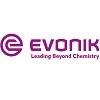
Content sponsored by:
Evonik Animal Nutrition
Optimizing Feed Additive Integration: Mixing and Dosing Strategies
Published: July 10, 2025
Source : Christian Rabe, Head of Feed Technology at Evonik Animal Nutrition
In this interview, Christian Rabe, Head of Feed Technology at Evonik Animal Nutrition, shares practical insights on key issues like mixing homogeneity, dosing accuracy, and the technological solutions that help feed mills enhance efficiency without compromising quality.

Photo courtesy of Evonik_an (Instagram)
From the role of dry versus liquid feed additives to the value of smart systems like AMINOSys® and AMINOBatch®, his expertise sheds light on how modern feed production can stay competitive, cost-effective, and performance-driven.
Engormix. What does “mixing homogeneity” mean in animal feed, and why is it important? What problems can arise if the feed is not mixed properly?
Christian Rabe. Mixing homogeneity, expressed as coefficient of variation (CV), ensures that all added nutrients like vitamins, trace minerals, amino acids, etc. are available in the right amount within each feed pallet. It refers to the consistency of supplementation within a given batch. Farmers strive for the best animal performance, health and efficiency, while achieving value for money in today’s challenging times. Indeed, this is important far beyond the livestock industry. With a growing world population and rising demand for high quality and sustainable animal protein, the saliency of best farming practices that lead to optimal animal performance and efficiency is greater than ever. Yet, numerous factors can impede these goals.
While the industry may sometimes focus on systemic factors, such as environmental and supply chain issues, there are other elements that can more easily be controlled. For instance, the uneven mixing of feed additives, such as high precision essential amino acids like methionine, leads to variable body weight and performance of livestock. Without controlled mixing homogeneity, resources are wasted and, quite simply, farmers lose money.
Tiny proportions of these feed additives have huge effects. It can make all the difference in feed. No wonder micro-ingredient dosing and handling are such critical factors in profitable feed production. These ingredients need to be distributed homogenously in the final feed to improve livestock performance such as feed conversion, body weight gain and flock homogeneity. The homogeneous mixed feed can achieve uniform animal performance and maximize the efficiency of expensive feed additives.
Engormix. How does using dry feed additives compare to liquid additives in terms of mixing challenges?
Several factors influence mixing homogeneity in feed production. These include the physical properties of the products and the type of raw material used. For example, adding feed additives in liquid form makes the task of homogeneity more challenging compared to using dry alternatives. Dry feed additives have advantages over liquid feed additives due to their shorter mixing time and greater flexibility. Liquid additives can cause clumping, and require regular cleaning and maintenance of equipment to ensure sufficient mixing homogeneity and avoid cross-contamination. Equipment and its maintenance also will affect the way products are proportioned and the homogeneity and accuracy of the final mix.
Engormix. Can you explain what “dosing accuracy” means and how it influences feed quality?
Christian Rabe. Dosing accuracy determines the consistency of supplementation of feed additives from batch to batch. It is the degree to which the feed additives are evenly distributed throughout the feed, all the time. Dosing accuracy, as well as mixing homogeneity are important because it ensures that each animal receives the same amount of nutrients.
Adding a large number of different micro-ingredients directly to the feed composition allows you to fine-tune the most cost-effective formulations that optimize animal performance according to the needs of each species and age group. No wonder the number of micro-ingredients continues to increase in step with scientific advances in animal nutrition. Manual handling of bagged micro-ingredients is labor intensive. Dosing can become a bottleneck and a significant cost-driver in your process.
As well as mixing homogeneity, dosing accuracy is essential for livestock performance such as feed conversion, body weight gain and flock homogeneity.
As well as mixing homogeneity, dosing accuracy is essential for livestock performance such as feed conversion, body weight gain and flock homogeneity.
Engormix. What smart technologies or systems, like AMINOSys® or AMINOBatch®, help improve mixing homogeneity and dosing accuracy?
Christian Rabe. Evonik offers several solutions to meet the challenges of mixing homogeneity and dosing accuracy. These include AMINOSys® dosing automation hardware for feed mill managers to boost the efficiency of feed additives such as MetAMINO®, GuanAMINO® and BioLys®.
Our AMINOSys® dosing system provides our customers with several benefits. These include accurate and reliable feed additive dosage going into the mixer; storage, dosing and conveying of up to four products; and a fully automated dosing process which is integrated into the feed mill process control system. We have long-term customer relationships, some for more than 30 years, on six continents and now have approximately 600 systems running and linked with approximately 60 million tons of feed production per year.
AMINOSys provides an advanced, flexible, and scalable handling solution for fully automated high precision dosing of feed additives from Evonik. This allows cost savings through reduced product handling and lower product losses. Evonik provides comprehensive on-site surveys, installation, and support services through its experts, who also train on-site staff and provide after-installation services. AMINOSys is available for 25 kg paper bags, big bags or full bulk silos. The AMINOSys® line of handling solutions is optimized for adding Evonik feed additives into the feed mill process and guarantee a high dosing accuracy.
Evonik also offers AMINOBatch® service to improve the performance of the feed production by analyzing mixing homogeneity within the mixing process. The service provides key insights into dosing and mixing processes, including a comprehensive report on the handling of micro-ingredients and the accuracy and repeatability of batch mixing lines.
Evonik also offers AMINOBatch® service to improve the performance of the feed production by analyzing mixing homogeneity within the mixing process. The service provides key insights into dosing and mixing processes, including a comprehensive report on the handling of micro-ingredients and the accuracy and repeatability of batch mixing lines.
Engormix. What practical advice would you give a feed mill manager who wants better mixing results without raising costs?
Christian Rabe. In summary, mixing homogeneity and dosing accuracy are critical to achieving uniform animal performance and maximizing efficiency in sustainable meat production. Optimization of process parameters, equipment maintenance, reduction of liquid addition and raw material selection, as well as strict quality control processes, are essential for achieving mixing homogeneity and dosing accuracy in feed production.
Most importantly, a more robust concept in practice and less costly alternative to optimize mixing homogeneity of commercial feed is to keep the addition of liquid ingredients to a minimum while relying on dry additives.
Next to this, feed technology solutions, such as Evonik’s AMINOSys® and AMINOBatch handling solutions can help to improve mixing homogeneity and dosing accuracy, resulting in better animal performance and cost savings.
Related topics:
Mentioned in this news release:

Influencers who recommended :
Kurt A. RosentraterRecommend
Comment
Share

Would you like to discuss another topic? Create a new post to engage with experts in the community.



